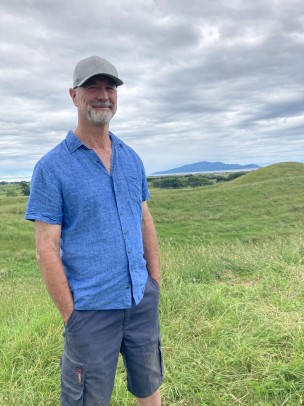Successful aerial operation in Tararua Ranges helps ensure Kāpiti Coast remains TBfree
OSPRI and DOC have successfully completed its first pest control aerial operation in the Northern Tararua Ranges over the weekend, covering an area of 32,750 hectares.
 This is a significant achievement as it means the entire Tararua Ranges, covering an area of close to 70,000 hectares has now been treated with 1080. The reason for this extensive pest control in the ranges is two-fold: for OSPRI to help manage bovine tuberculosis (TB) which is spread through possums to cattle and for DOC to protect our taonga species, such as Kaka, bellbirds, kakariki, rifleman and other native birds.
This is a significant achievement as it means the entire Tararua Ranges, covering an area of close to 70,000 hectares has now been treated with 1080. The reason for this extensive pest control in the ranges is two-fold: for OSPRI to help manage bovine tuberculosis (TB) which is spread through possums to cattle and for DOC to protect our taonga species, such as Kaka, bellbirds, kakariki, rifleman and other native birds.
While it’s been a long time since the Kapiti Coast had bovine TB, Te Horo farmer Kerry Walker still remembers with a grimace what it was like when TB came to his farm some 30 years ago.
Kerry took up farming in the 1980’s after finishing a university degree, a roadie around the US and Canada in a Chevy Vega and an 18-month stint working on farms in England. When he returned to New Zealand, he started working on the family farm. “My father was a dairy farmer, and I was always interested in the farm, but wasn’t so interested in the cows back then.”
“I started out as a contract milker, then sharemilker and eventually bought some of the farm I was on.”
Over the years, he has added to his dairy farm and built it up to 300 acres.
About ten years into dairy farming with 250 cows, Kerry found out through the annual TB testing that some of his animals had a suspected TB infection. “I had some reactors here because of avian TB so I wasn’t overly concerned with testing positive. Usually what would happen is they retest the cows, and they would go clear. That’s what I expected. So, when it wasn’t clear and turned out to bovine TB rather than avian TB, they had to keep on sending reactors away to slaughter and they put us on testing every six months.” (A herd will stay classified as ‘infected’ until the whole herd has had two clear TB tests, at least six months apart. Then it will be reclassified as ‘clear’.)
It took about four years before Kerry could declare his farm had TB free status. “It was a difficult time,” recounts Kerry. “We couldn’t sell calves or anything like that until we got clear through our tests, and that was very frustrating and financially quite damaging along with everything else.”
At the time, Kerry wasn’t the only one in the area whose farm had bovine TB. “While I didn’t feel like I was a social pariah, the whole thing did impinge on my farming operation because I used to sell a lot of calves, but of course nobody was interested in purchasing mine with the TB restrictions, so I had to send them off as Bobby calves. That was the only time I have ever sent off Bobby calves and I’m happy to say I have never needed to since that time.”
In total, Kerry lost 20 cows as reactors over the three years before achieving TB clear status again. He says the experience changed his approach to farming practise. Whereas before he’d just buy more cows if he needed them which brought the risk of bringing disease onto the farm, now, after getting TB, he has become more self-contained by avoiding bringing in more stock. “It made me more aware. And of course, this was before NAIT. Back then we just had ear tags.”
By the late 1990s the ability to properly track and trace came in with the introduction of the traceability programme. “I do agree with the tracing system as it does help people out. It probably saved our bacon for M.bovis too, because if we didn’t have a system for that we never would have got that under control.”
To minimise the risk of catching bovine TB, Kerry’s advice to farmers is to be self-contained if you can and keep animal tracing up to date. “In my day, we didn’t have any way of tracing animals to determine where they came from, now it’s stored on a national database – thank god for that!”

